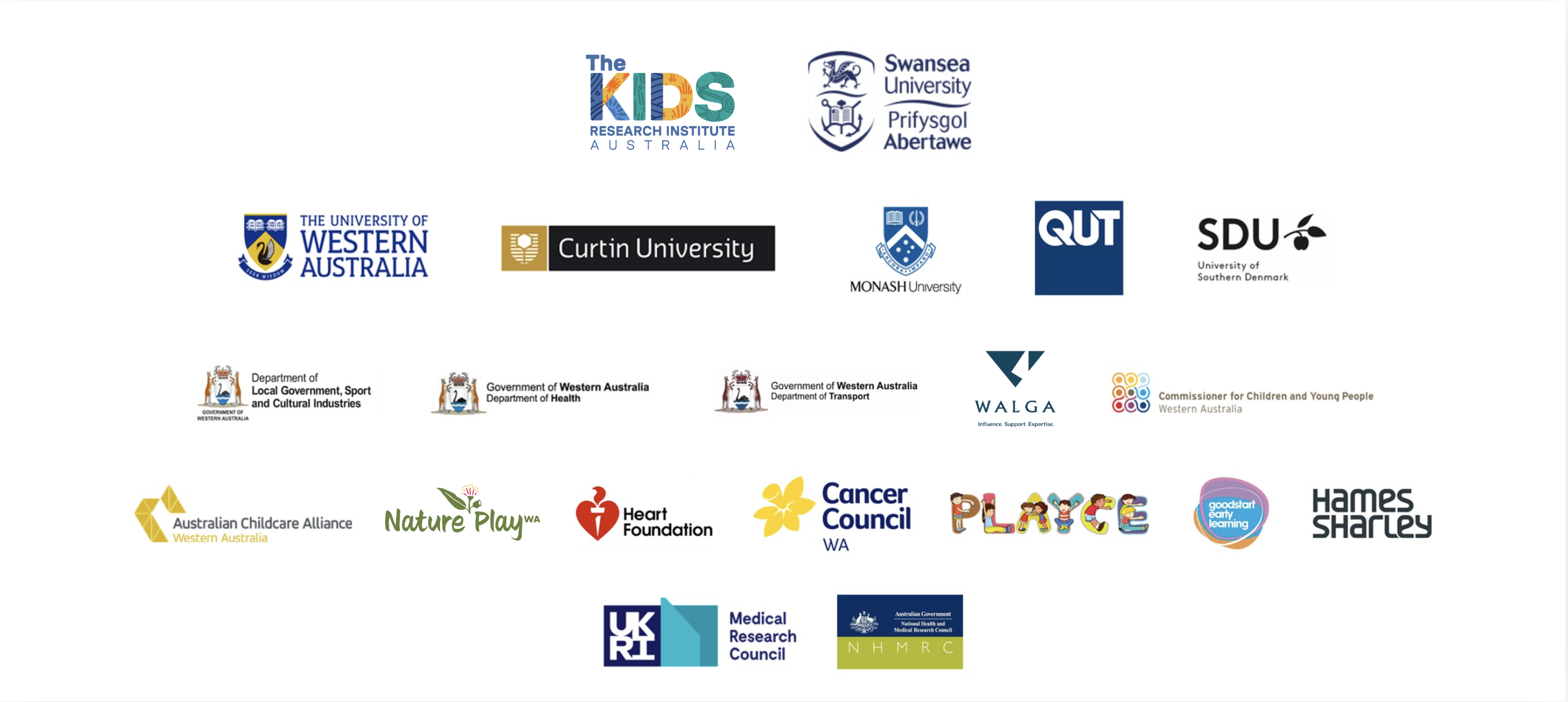Built Environments And Child Health in WalEs and AuStralia (BEACHES) is a collaborative project bringing together researchers from the UK and Australia.
The BEACHES project aims to provide high quality evidence of aspects of the built environment which can be modified to reduce the negative impact on children’s physical activity, eating behaviours and weight status.
This project focuses on the prevention of non-communicable diseases by concentrating on our most vulnerable population group - children. Childhood obesity and physical inactivity are two of the most significant modifiable risk factors for non-communicable disease prevention. Yet, the majority of UK and Australian children are insufficiently active and many are overweight or obese.
This research will inform evidence-based planning policy and practice strategies to prevent the rise in obesity and non-communicable disease in future generations. We will develop a set of guidelines focused on principles of best practice for liveable, family-friendly built environments that promote healthy beginnings.
BEACHES includes a team of epidemiologists, geographers, statisticians, and data scientists who have an outstanding track record of collaborative and multidisciplinary research. Our research team includes scientists from The Kids Research Institute Australia, Swansea University, The University of Western Australia, Curtin University, Monash University, Queensland University of Technology and University of Southern Denmark.
Built Environments and Child Health: A Policy Review
The BEACHES Project conducted a policy review to investigate how Western Australian and national policies address the health of children through the built environment’s influence on obesity and the modifiable risk factors for obesity, physical activity, sedentary behaviour, and diet.
The review found few policy documents recognised the specific needs of children through the built environment. The distinct ways that children of different ages and cultural backgrounds experience the built environment was also not evident. The voices of children need to be included in the development of policies to provide a health-promoting built environment. Read the full report below.
Publications
Pedrick-Case R, Bailey R, Beck B, Beesley B, Boruff B, Brophy S, Cross D, Dhamrait G, Duncan J, Gething P, Johnson RD, Lyons RA, Mizen A, Murray K, Pouliou T, Rafferty J, Robinson T, Rosenberg M, Schipperijn J, Thompson DA, Trost SG, Watkins A, Stratton G, Fry R, Christian H, Griffiths LJ (2022). Built Environments And Child Health in WalEs and AuStralia (BEACHES): a study protocol. BMJ Open, 12(10), e061978–e061978. https://pubmed.ncbi.nlm.nih.gov/36283749/
George P, Murray K, Trost SG, Boruff B, Christian H. Associations between natural blue and green space and preschool children's movement behaviours. People and Nature. 2024;6(4). https://doi.org/10.1002/pan3.10682
HenryA, Fried L, Nathan A, Dhamrait G, Boruff B, Schipperijn J, Cross D, Beck B, Trapp G, Christian H. The built environment and child obesity: A review of Australian policies. Obesity Reviews. 2024;25(1):e13650-n/a. https://pubmed.ncbi.nlm.nih.gov/37804083/
Nathan A, Schipperijn J, Robinson T, George P, Boruff B, Trost SG, Christian H. The moderating role of parent perceptions in relationships between objectively measured neighbourhood environment attributes and pre-schooler’s physical activity: Findings from the PLAYCE study. Health & Place. 2023;81:103030-. https://pubmed.ncbi.nlm.nih.gov/37116253/
Robinson T, Dhamrait G, Murray K, Boruff B, Duncan J, Schipperijn J, Christian H. Association between preschooler outdoor play and home yard vegetation as measured by high resolution imagery: Findings from the PLAYCE study. Health & Place. 2024;85:103178-. https://pubmed.ncbi.nlm.nih.gov/38262260/
Robinson T, Boruff B, Duncan J, Murray K, Schipperijn J, Nathan A, Beck B., Stratton G, Griffiths L. J., Fry R, Beesley B & Christian H. Understanding variations in the built environment over time to inform longitudinal studies of young children's physical activity behaviour - The BEACHES project. Health & Place. 2024;90:103345. https://pubmed.ncbi.nlm.nih.gov/39255604/
Working papers for the ARC Centre of Excellence for Children and Families over the Life Course
Christian H, Fried L, Dhamrait G, Nathan A, Beck B, Boruff B, Cross D, Gething P, Schipperijn J, Trost S, & Villanueva K. ‘Built Environments and Child Health: A Policy Review’, Life Course Centre Working Paper Series, 2021-22. Institute for Social Science Research, The University of Queensland. 2021
Policy submissions
Draft policy on public open space (POS) planning in WA (2023)
Perth and Peel Urban Greening Strategy (2024)


